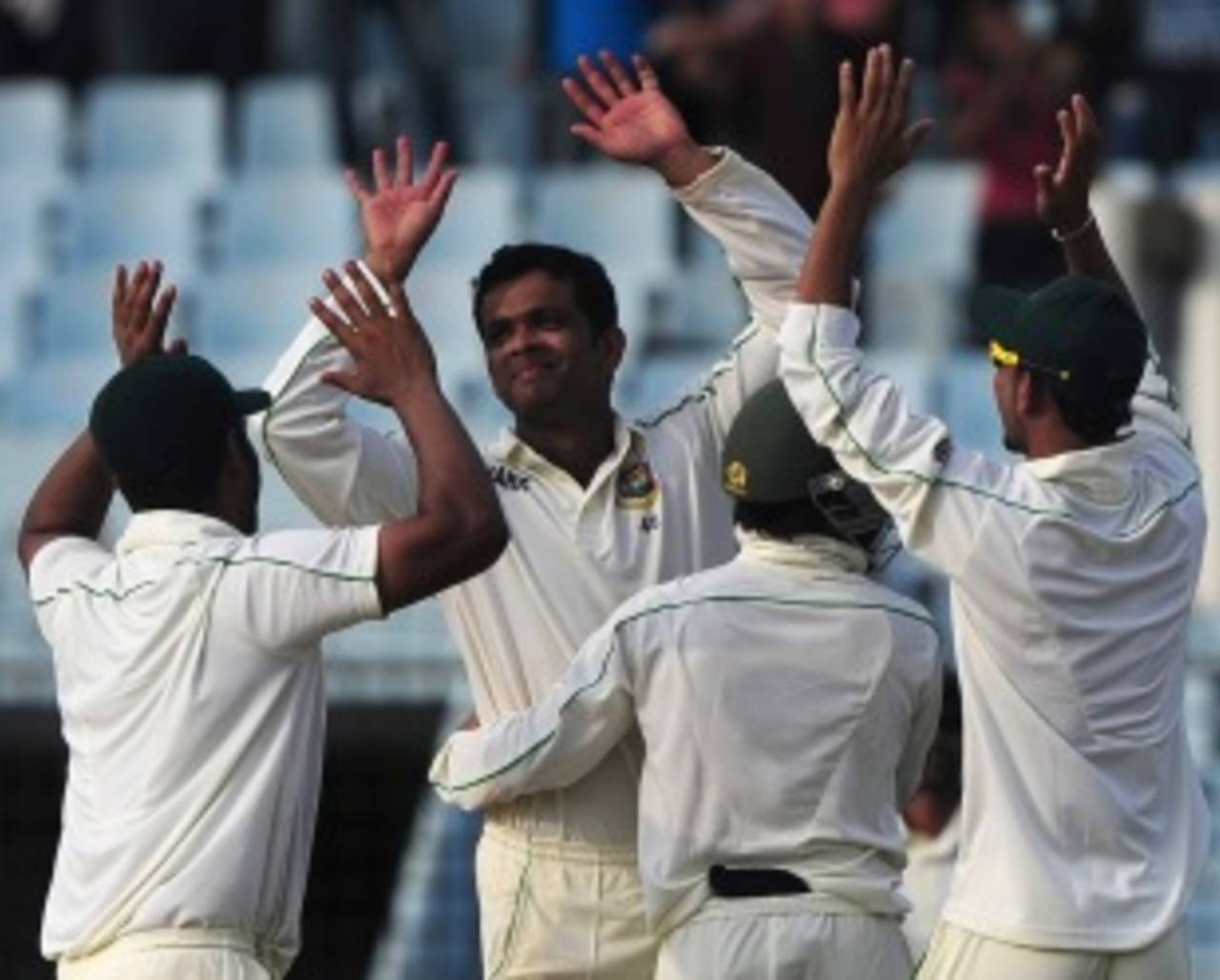The Bangladesh and New Zealand camps were in slightly contrasting positions at the end of the first day's play. The visitors were bemused at having lost three wickets in the last hour which spoiled the top-order's fine work, particularly Kane Williamson's fourth Test century. The home side was justifiably pleased to have a final burst of wickets, but didn't particularly like how the pitch had turned out.
The 23-year-old's composed 114 was as much a test of patience for the bowlers as it was for Williamson himself. He had batted for four-and-a-half hours, enough time for the Bangladesh bowling unit to get constricted.
They did start bowling a one-day line, but Williamson didn't chase too many wide ones or miss out on anything offered short of length. He started off his innings with two impossibly difficult shots that were daintily executed. But then he stopped looking for those gaps, and only reacted to anything that was wide and short.
In the process, he added 126 for the second wicket with Peter Fulton, who batted out nearly four hours for his 73.
"He's a very good player of spin bowling," Fulton said. "He made it look pretty easy out there at times. Over here with the heat and humidity, you start to get tired and maybe reign yourself in a little bit. You have to be happy to just be out there in the middle. When the bad ball comes along, he is good enough to put them away."
Williamson's innings was given more value by the surface on which he batted. The discussion throughout the day centered around the pitch, particularly because of the brand new playing square at the Zahur Ahmed Chowdhury Stadium.
The fielding side's spokesman for the day, Nasir Hossain, was critical of the track.
"We hoped the wicket would turn. But it didn't do as much as we would have liked. There was some turn towards the end of the day. I hope it would turn as much tomorrow.
"If the ball spun, we would have batted today. We knew for almost a year that New Zealand would be here during this time. The wicket wasn't what I had wished for. It is a new surface, so we have scant idea of which way it would go in the rest of the game. But we have to adjust ourselves and get them out quickly tomorrow."
Fulton, on the other hand, hadn't expected the pitch to behave any differently. In the remaining days of the match, he understands that it will break and the ball will start to turn.
"It was probably the wicket that we expected," Fulton said. "It was pretty low and slow, not a lot of bounce. As the day went on, it started to take turn. It was pretty much what we planned for.
"I wouldn't expect the bounce to improve. I would expect it to get lower and slower. When you win the toss and bowl, you hope the wicket will deteriorate and get even tough to bat on."
The New Zealand opener believed that the side's batsmen had mostly handled Shakib Al Hasan and Abdur Razzak well, as left-arm spinners are considered the biggest threat for the visitors. "They've got two good left-arm spinners in the team. If they're going to be bowling the majority of the overs, they'd get the wickets. At times today, we played them very well," Fulton said.
The lack of turn is likely to abate in the next day or two as cracks start to appear. But the low bounce and the sluggishness is not a new phenomenon in Bangladeshi playing surfaces, regardless of how old or new they are. The curator here tried to produce as sporting a wicket as possible, despite his limitations and the methods used in this part of the sub-continent.
The basic idea of producing wickets in Bangladesh is to avoid using grassroots when they are building up the layers of soil. The roots hold the water and retain moisture for an extended period. It helps bind the wicket better, making it a harder surface eventually. It also slows the process of wearing down.
The Chittagong pitch, like any other in the country, is devoid of grass and as a result is likely to have lower bounce. The pace, too, wouldn't be encouraging.
One wonders how Williamson produced those two beautiful shots straight down the ground and through mid-wicket so early in his innings. As the match wears on, such natural ability will have to be curbed and batting out of one's comfort zone is likely to take precedence.
Mohammad Isam is ESPNcricinfo's Bangladesh correspondent. He tweets here
